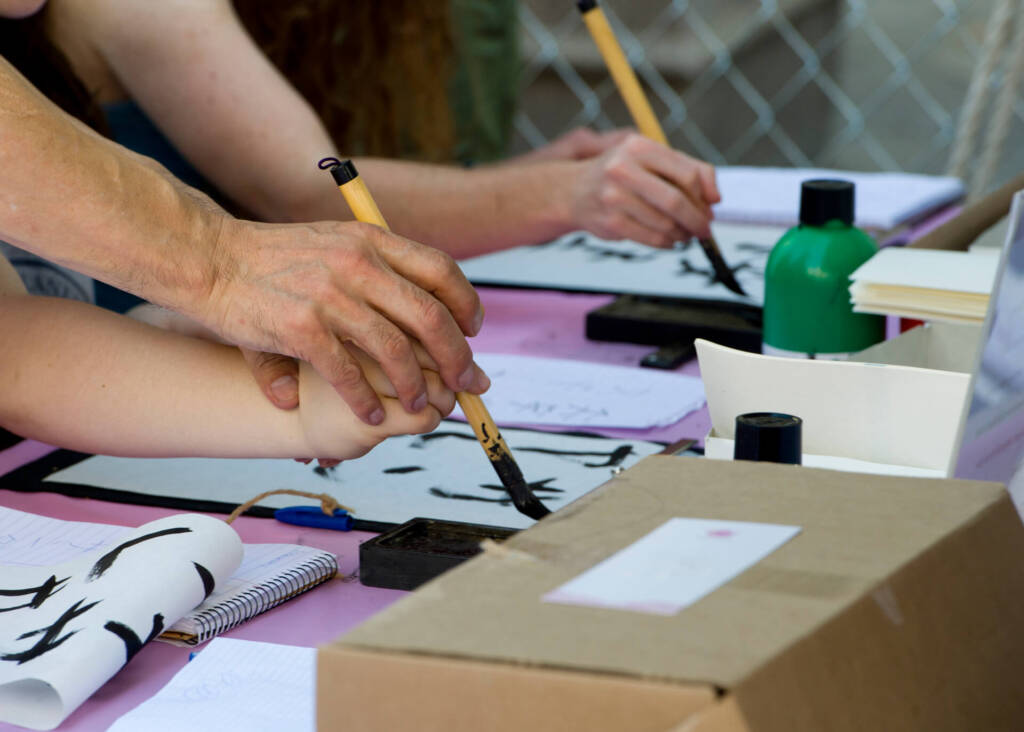Cracking the Code: Essential Rules For Chinese Stroke Order

Chinese characters might look like a mess of indecipherable squiggles and dots, but every character employs a set of fundamental strokes and follows defined stroke order rules. Unless you plan on turning your handwriting into a cryptic code incomprehensible to anyone else, you’ll want to follow the basic rules of Chinese stroke order.
A little practice early on will save you time in the future. With a few stroke order rules in your toolkit, you’ll find you can learn Chinese characters more quickly, and your handwriting will improve.
Why should I learn Chinese stroke order?
I know, I know. You don’t expect to be writing Chinese anytime soon. With half your life tied to your cellphone and the rest connected to the computer, you barely write in your native language anymore, let alone in Chinese. Most young people in China today use pinyin to input Chinese characters. So, why does stroke order matter in Chinese?
Even if you mainly use a smartphone or laptop to input Chinese text, handwriting characters is useful for developing muscle memory. Writing characters by hand will enhance your memorization and retention, helping you to learn Chinese characters as soon as possible. And even for students who prefer using pinyin input, it never hurts to have another option.
The easiest way to look up an unfamiliar character in popular digital dictionaries such as Pleco is to draw it with your finger. But if your stroke order is all over the place, the app will struggle to distinguish between similar characters. On the flip side, get the stroke order right, and the app will recognize the character instantly, no matter how terrible your writing is.

The 12 rules of Chinese stroke order
Remember, the point is not to learn how to write specific characters by hand. Writing characters one by one in a long list is a terrible way to learn Chinese, particularly for non-native learners. Consider these instructions as guidelines for the basic Chinese characters’ stroke order rather than universal rules of Chinese writing.
Use a pen — or, more fun, a brush, and ink — to write the characters along with the videos. When starting, some rules may seem complicated, even contradictory. With a bit of practice, however, they’ll soon become intuitive. After a while, you’ll no longer need to think about the rules — writing Chinese characters this way will seem natural.
Most characters are formed from eight basic strokes, all demonstrated in the Chinese character 永 yǒng, meaning “forever.” Learning these eight fundamental strokes will speed up your Chinese language study and accelerate your reading.
Note that some stroke orders vary depending on the region. There are minor discrepancies in stroke order between the simplified characters, the traditional Chinese characters used in Hong Kong and Taiwan, and the Korean and Japanese forms. Here at Mandarin Blueprint, we prefer the simplified forms taught in mainland China.

1. From top to bottom
Rule #1 is simple: write Chinese characters from top to bottom. For example, in the character 二 èr (“two”), the correct Chinese stroke order requires you to draw the top stroke first.
Write the three characters by hand, following the stroke order shown in the video: 二,工,全. Remember, your handwriting doesn’t have to be beautiful, but using the correct stroke order is important.
2. From left to right
It’s a commonly held Western myth that the Chinese write “backward” or from right to left. In ancient times, when Chinese was written in brush and ink on bamboo scrolls, it was customary for scribes to hold the paper with their left hand while writing from top to bottom and right to left. Even then, they still wrote individual Chinese characters from left to right.
Whatever the history of Chinese writing is, rule number #2 remains unchanged: write from left to right. Modern Chinese is written from left to right, whether we are talking strokes, components, or characters. Check your stroke order by writing the following examples by hand: 一,人,把.
3. Horizontal before vertical strokes
Whenever horizontal and vertical strokes cross, write the horizontal strokes before the vertical. If the vertical stroke crosses the horizontal, draw all the horizontal lines first.
Follow along with the examples in the video, applying rule #3: horizontal before vertical. In the last example, 工 gōng, the vertical stroke does not cross the horizontal. In that case, draw the first horizontal stroke, then the vertical, then the final horizontal stroke.
4. Diagonals right to left, before diagonals left to right
Rule #4 sounds complicated, but it’s pretty straightforward. For strokes slanting downward, write diagonals right to left (丿) before you write left-to-right diagonals (㇏).
Watch the video to see the correct stroke order rule for these Chinese characters (人,又,八), and practice along with your pen or brush. Handwriting the characters will enhance your memory and help you internalize the rule.
5. Outside before inside
Rule #5: Draw the outside before the inside when the characters are partially enclosed. For example, in character 月 yuè, meaning “moon,” first write the outside components from left to right, then draw the two horizontal lines inside.
For the last character, 包 bāo, the top component (勹) is considered the outside, as it partially encloses the bottom component (巳). You’ll quickly recognize these outside enclosures in Chinese characters with some practice.
6. Inside before outside
Rule #6 may seem to contradict rule #5, but it only applies to Chinese characters enclosed from the bottom or the bottom left. You’ll draw the inside strokes before the outside for those Chinese characters. Examples include 凶,建,and 达.
In the Chinese character 凶, draw the diagonals following rule #4 and the surrounding enclosure. Whatever your level, the goal is not to create works of art but to write Chinese characters accurately, following the rules.
7. Inside before bottom enclosing
Rule #7 applies only to the exterior “boxes,” components that completely enclose the rest of the character, such as those in 田,日, and 国.
In these examples, draw the box’s left, top & right sides first, then the strokes in the middle, then close the box with the bottom horizontal stroke. The stroke order may sound complicated, but practice along with the video, and it will soon become clear.
8. Center verticals before outside “wings”
In Chinese characters with “wings,” draw the vertical stroke first before adding the exterior details. For example, in a character such as 小, you’ll draw the vertical hook (亅) first before adding the wings (八).
Following the video, write each Chinese character by hand using the correct character stroke order.
9. Cutting strokes last
Rule #9: cutting strokes come last. Similar to rule #3: horizontal before vertical, for vertically symmetrical characters like 中,半, and 羊, you’ll draw the horizontal strokes and other components before the final “cutting” stroke runs through the character.
Let’s take 羊 as an example. The correct stroke order begins with the little dots 丷 at the top. Next comes the three horizontal strokes 三. Finally, you’ll complete the character with the vertical stroke that cuts through from top to bottom.
10. Left vertical before enclosing
Combining rules #2 (left to right) and #7 (inside before bottom enclosing), we arrive at rule #10: left vertical before enclosing.
This rule applies to most characters that are entirely enclosed, including examples such as 口,日, and 四. Draw the left vertical stroke first, then the enclosing component. After that, draw the strokes in the middle before closing the box with the final horizontal stroke. Practice along with the video to get the idea.
11. Top or upper-left dots first
Even when it breaks rules #1 (top to bottom) and #2 (left to right), you’ll want to draw the dots at the top or upper left before anything else.
While the traditional Chinese stroke order for 門 (“door”) will follow the usual left-to-right rule, in simplified Chinese characters, 丶 replaces a series of other strokes. In the resulting character, 门, you’ll draw the dot first.
12. Inside or upper-right dots last
Best remembered as the counter to rule #11, rule #12 requires that dots on the inside or upper-right are written after every other stroke. In 玉, the Chinese character stroke order begins with two horizontal strokes 二, followed by a vertical 丨. You then draw the horizontal stroke 一 at the base before adding the dot 丶.
Although few people in China today use handwriting input for Chinese characters, typing by stroke order remains the fastest input method for typing Chinese. There are many situations when knowing the stroke order of Chinese characters is essential, even if you rely on your smartphone for most Chinese language tasks. And for those with even the slightest interest in Chinese calligraphy, learning the rules of character stroke order is essential.
Many apps and tools now incorporate animated Chinese stroke order diagrams demonstrating the stroke orders for Chinese characters and guides to the radicals, tones, and pronunciation. Following the stroke order animations will help you internalize the rules, significantly improving your learning of Chinese characters.








